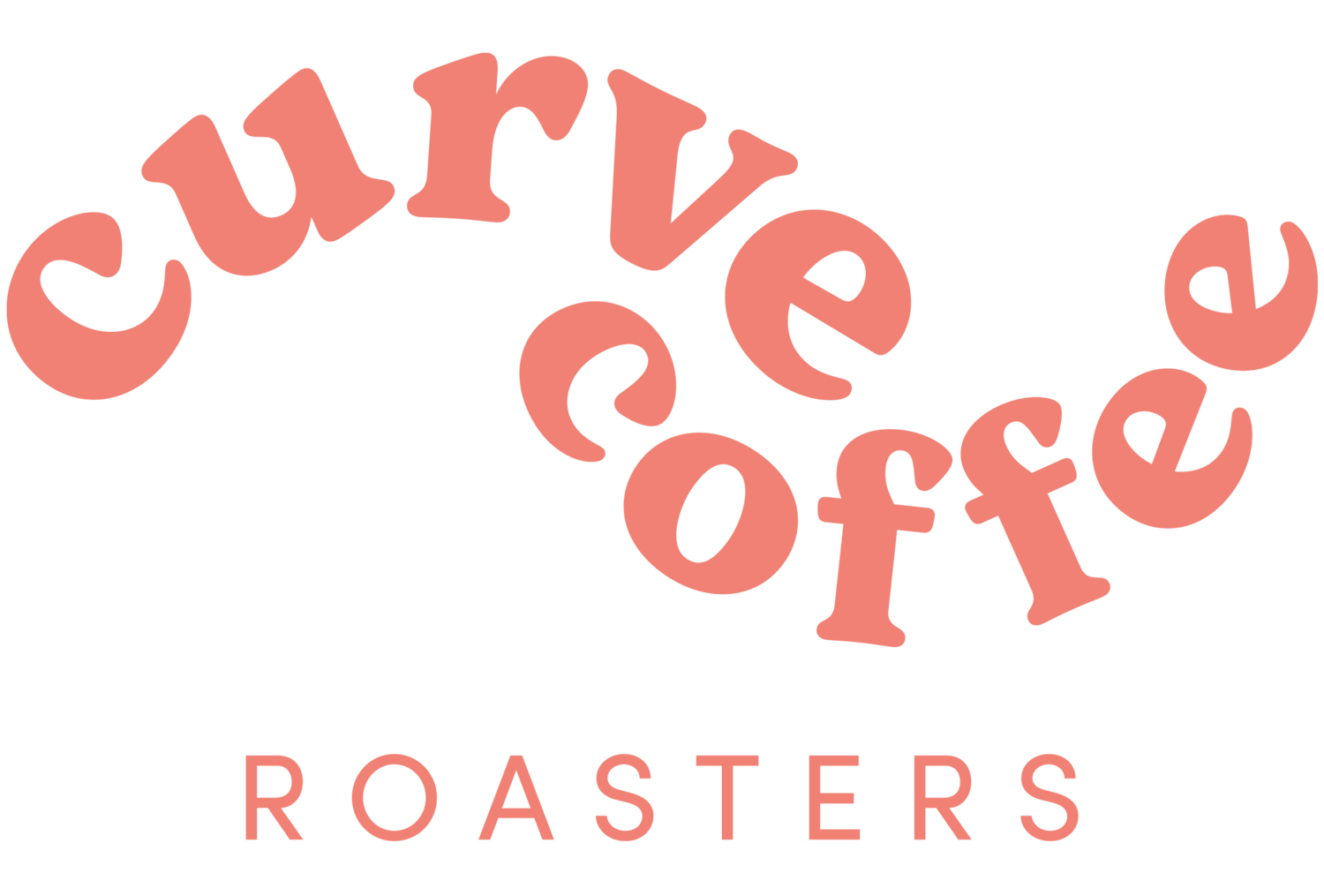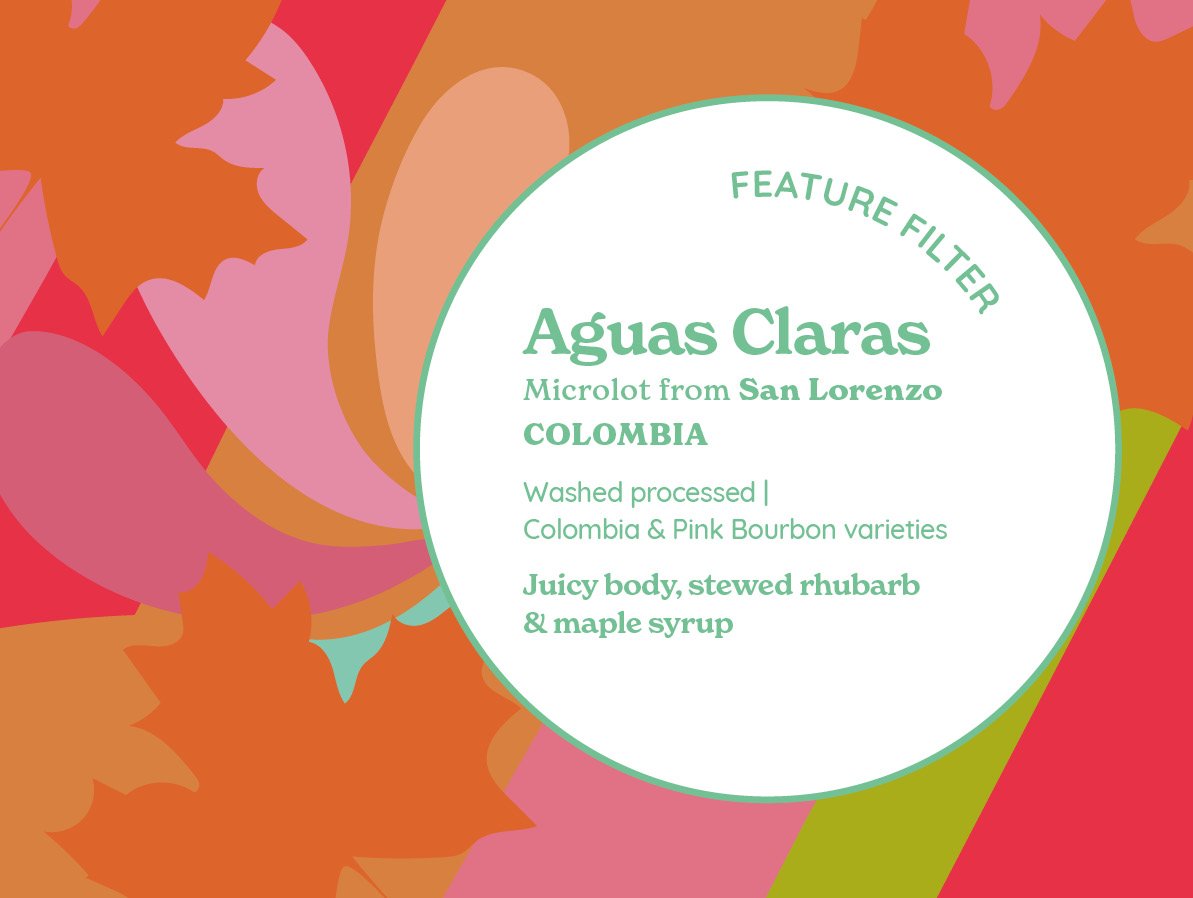Feature Espresso : Aguas Claras - Microlot from San Lorenzo | Colombia
Norbey and the parabolic dryer at his mother’s farm
Key origin info:
Producer: Norbey Alarcón
Region: Caldas, Colombia
Altitude: Around 1750 masl
Varietal: Pink Bourbon & Colombia varieties
Process: Fully washed and dried in parabolic solar dryer
Exporter: Siruma Coffee | Importer: Falcon Speciality
Cup profile: Juicy body, stewed rhubarb & maple syrup
Purchase history: Continuos all year round sourcing from San Lorenzo since 2019, 3rd season of micro-lots in 2024/25
More about this coffee and the supply chain:
We source all our Colombian offering with the help of our importing partner Falcon Speciality and exporting partner in Colombia - Siruma. With focus on sustainability and quality, Siruma partner with and purchase coffee from producers’ groups and cooperatives in three regions in Colombia - Caldas, Cauca and Tolima.
For over 5 years now have been purchasing a regional community lot from San Lorenzo to offer as our house espresso. Sourcing from one producing community enables us not only to understand the supply chain and be able to clearly communicate the coffee’s origin but also to establish and nurture a lasting partnership with the San Lorenzo growers’ group facilitated through Siruma and Falcon. This way we can benefit from having a reliable and delicious coffee to offer all year round as our staple espresso and in turn we commit to purchasing from the same group on long term basis, providing a stable outlet for their coffee that purchased at premium prices.
This coffee is one of the lots selected as part of the microlot programme and “drying project” Siruma has been developing within the San Lorenzo area and producing community. The programme is aimed at maximising value that producers can gain from their crop based on the cup quality of their coffee. Traditionally, growers in San Lorenzo belong to the Cooperativa de Caficultores del Alto Occidente de Caldas and deliver their coffee to the local collection point in San Lorenzo town. Here the coffee in parchment is assessed for physical quality and blended together to create various larger regional lots. Siruma have worked to create a baseline for their microlot programme project here, getting to know hundreds of producers. After cupping hundreds of samples, the first round of 20 growers were selected for their potential to take part in the project. This was based on the cup scores of their coffee and ability to produce a certain volume of coffee with micro-lot potential (this is still very small but generally larger than a few 70kg sacks). These growers were selected and keen to take part in the project and have contributed to have improved drying facilities constructed under Siruma’s Solar Dryer Project. Upon delivery of their coffee, the local collection point manager keeps lots from these growers separate for Siruma’s quality managers to assess and decide what coffee can be marketed and sold as higher scoring microlot earning their growers further quality premiums.
Elkin and Gloria, one of grower families from San Lorenzo who took part in Siruma’s Drying Project describe their experience.
About Aguas Claras and Norbey - the grower behind this microlot:
This lot is named after the Aguas Claras hamlet within the San Lorenzo area. It is a single grower micro-lot produced by Norbey Alarcón and dried using his mother’s Luz Dary’s facilities. Luz is one of the growers taking part in “Drying project” initiated by Siruma - our export partner in Colombia. The goal of the project is to build better coffee drying infrastructure and improve not only the coffee’s quality and longevity but also the farmers’ quality of life thanks to its ease of use and increased capacity. Additionally, monetary value for growers is maximised by separating high scoring lots such as this one, sold with significant premiums going directly to growers.
The lot is composed of cherry harvested from 2,150 trees planted at the highest elevation of Norbey’s farm. During harvest the focus is on picking only the best cherries selected for his micro-lot. These cherries are not mixed with the rest of the farm while processing it since Norbey understood that his processing and the varieties have a good micro-lot potential. Norbey does not have good drying infrastructure at his farm, so he moves his micro-lot potential coffee to his mother's farm, Luz Dary, where he knows the drying will have a positive impact towards getting a better cup profile. He not only works his farm, but he is also in charge of his mother's farm. Thankfully, both farms are very close to each other, making the process a lot easier.
About San Lorenzo:
Most of the growers from San Lorenzo area part of the Cooperativa de Caficultores de Alto Occidente de Caldas which was established in 1964. The area is based in the Rio Sucio municipality of Caldas Department and there are 11,500 inhabitants with 1,150 farmers producing coffee within 21 communities, predominantly of indigenous heritage.
Until recently, this region was heavily inhabited by paramilitary groups and guerrillas, who looked to control this central corridor in Colombia. The region has not been known for specialty coffee production but as the local tensions have eased and access improved, it is now possible to showcase the great quality of the coffees available from this area.
The whole area of San Lorenzo is an indigenous reserve with its own administration. The region has a rare land distribution system and land can only be sold to other indigenous people from San Lorenzo. The indigenous inhabitants here believe in the Pacha Mama – earth goddess, and see the land as a living being. To them it is their duty to protect the natural environment and have as little impact as possible from their farming to leave it as intact as possible
Most growers have around 1 hectare of land on average spread around a few different parcels. During the harvest season, families work with their neighbours to selectively pick when cherries are fully ripe, occasionally during peak harvest times some growers hire pickers. The coffee is usually de-pulped on the same day and fermented for 16 -24 hours, depending on the weather, usually without and sometimes with a small amount of water. The coffee is then washed and put out to dry on small drying patios, usually either on the roofs of houses “Eldas” or in parabolic dryers, for between 7 – 14 days, again depending on the weather. Once dried to the right moisture content, the parchment coffee is delivered to the cooperative’s collection point in San Lorenzo town where it is assessed and allowed to rest before being milled and prepared for shipment.






